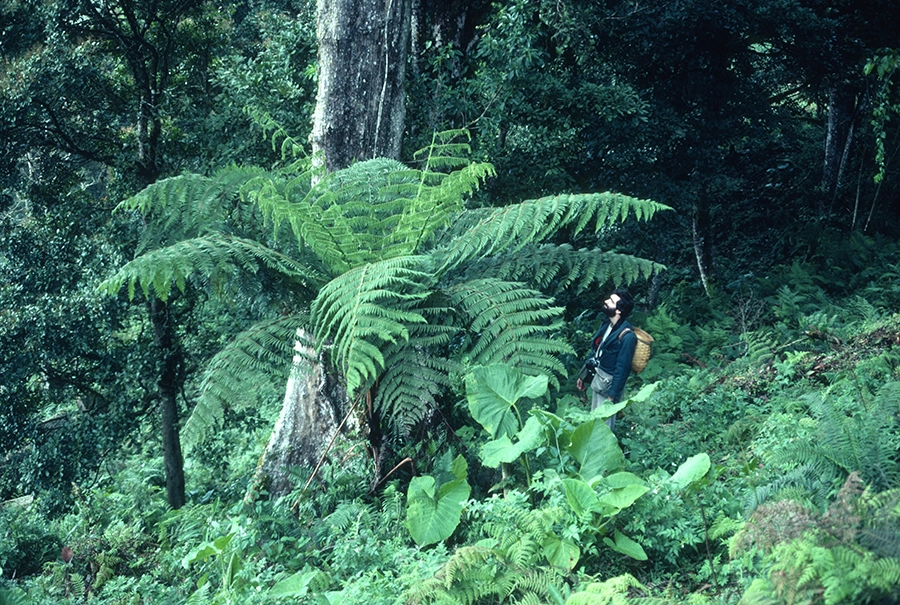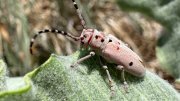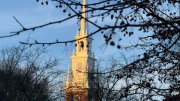Brian D. Farrell is the Lehner professor for the study of Latin America and a professor of biology in Harvard’s department of organismic and evolutionary biology, and serves as the curator of entomology at the Museum of Comparative Zoology. Farrell’s scientific research focuses on the coevolution of insects and plants, with a special emphasis on beetles (read more in “Brian Farrell in Bugdom” by Jonathan Shaw, from the September-October 2003 issue of Harvard Magazine). His lab also contributes to biodiversity documentation, studying field sites around the world.
What do you research and teach at Harvard, and what drew you to this field of study?
My lab and I work on the evolution of interactions between different kinds of tiny consumers, like insects and other arthropods, and their much larger hosts, such as plants or large animals. We all use the approach of phylogenetics to understand the directions, rate, and consequences of evolutionary changes in the associations tiny consumers have with their hosts, whatever they are.
I have been a naturalist all of my life, and when I was an undergraduate at the University of Vermont (my hometown school), I took all the many courses offered on the diversity of plants, animals, and fungi, as well as courses in geology and oceanography. I started to notice that the different species of a certain kind of insect, a kind of beetle or butterfly, fed on different species of a certain kind of plants, like a milkweed or goldenrod, and that struck me as surprising that an insect would hold on to exactly the same host plant over the millions of years it took to produce their many different kinds of insect species. It seemed more conservative than I thought ecological interactions, which are thought of as being quite dynamic—who eats who—would be across vast stretches of time and space.
At the same time, I was reading books by the famed Harvard evolutionary biologists Stephen Jay Gould and Ernst Mayr and the Stony Brook theorist George C. Williams. I was also exposed to the first ideas of how to study phylogeny with a new approach called cladistics, which also excited me. I was lucky to be encouraged by two mentors, a botanist, David Barrington, Ph.D. ’75, and entomologist Ross Bell. So, this all was percolating in my head when I met my grad school mentor, the late Charlie Mitter, at the University of Maryland. Turned out that he was interested in these things too, and so we clicked; the rest is history, as they say.
I’ve now been at Harvard for 30 years and knew both Stephen Jay Gould and Ernst Mayr as friends. I have been team-teaching the introductory lab course called Foundations of Biological Diversity (OEB 10) for much of that time and love the chance to share my enthusiasm for what I call the “greatest hits of biology” with our undergrads. Every course I have ever taught has at least one field trip because I think that witnessing nature afield is both inspiring (the sheer beauty of organisms) and humbling (why is this here and why does it look like that and not some other way?). I’ve felt this way ever since I was an undergrad and met other undergrads who shared this passion for nature. When friendship and intellectual passions meet, you can envision a life. That’s the real value of college, I think. The rest we mostly teach ourselves.
I also teach a first-year seminar called Why We Animals Sing (FR22t) that bridges the field of acoustic biology (how, why, and where animals communicate with sound) and the evolution of music, which is our own acoustic signal. This course has been a joyous experience for many years and brings together students with very different backgrounds in music or biology. I happen to also play jazz drums, and am interested in the evolution of music as a means of social cohesion and lessening the tensions of life in society. (I recently wrote a piece about this in the DRCLAS journal ReVista, entitled “The Biology of Inequality.”)
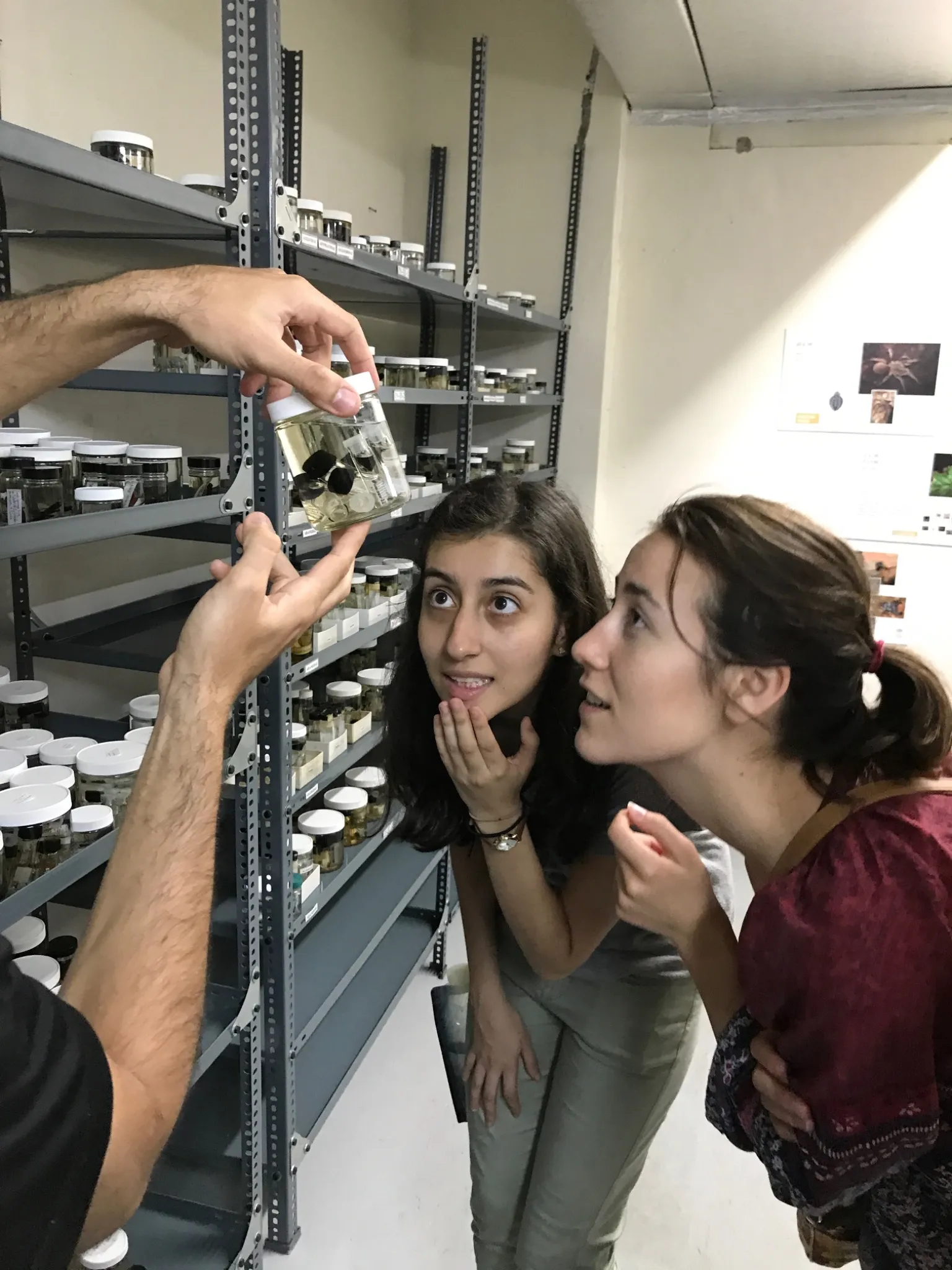
My students work on beetles, ticks, and mosquitoes these days, and we’re all interested in how things work and how the architecture of genomes may influence how quickly or slowly traits that affect interactions may change over evolutionary time.
Your research often focuses on the evolutionary relationships between insects and the plants they interact with. What does symbiosis teach us about how life has adapted on Earth over time?
My master’s thesis and Ph.D. thesis each showed that the phylogeny of particular kinds of beetles were closely tracking the phylogeny of their particular kinds of host plants, and so their associations, beetle with plant, were faithful over the tens of millions of years it took to produce several dozen species of each. These were the first examples of this kind of coevolution and so the work got some attention.
When I was a new assistant professor I tackled a much larger project aimed at the evolution of the most diverse group of plant-feeding beetles on earth, called the Phytophaga (about 130,000 species) because I had a hunch that the beetles that today feed on conifers and cycads—the woody plants that flourished in the Jurassic period, long before flowering plants diversified—might also have been around at the same time and had held on to their hosts for that long. Turns out I was right, and that was so surprising that my paper in the journal Science got two full color pages of coverage in The New York Times. Ecologists and evolutionary biologists were surprised by how conservative the evolution of these ecological associations was. (I used to joke that if these beetles were the size of Volkswagens, Stephen Spielberg wouldn’t have had to make a movie!)
The other side of the story is that the beetles that did make the switch to flowering plants diversified to a much greater extent, producing nearly all the diversity we see today. I also worked on the evolution of agriculture in beetles, the oldest examples of animals selecting and cultivating a clonal fungus crop for feeding their young (they’ve been doing it for 70 million years at least!).
Your research has shown that the diversification of beetles is closely tied to the evolutionary history of flowering plants. How does this work?
Early beetles seemed to have fed on fungi, rotting vegetation, or other small animals and then discovered the protein-rich parts of plant spores, pollen, and seeds, and some made the switch. As plants grew larger, more complex architectures, this also provided more habitat for beetles and other insects. Many plant-feeding beetles are quite faithful to particular host plant groups and become even more closely tied to feeding on parts of their host plants, such as roots, stems, leaves, or seeds. In these ways, beetles evolve like other tiny consumers, from parasitic worms to fungi to viruses, attacking only one kind of organ even when they switch hosts. It is my hope that we may find how this works through comparative studies of the genomic architectures of their various traits concerning interactions with hosts, to understand just why what seems so obvious is true: despite their often strongly conserved association with a certain kind of host, it’s nevertheless easier for tiny consumers to change addresses than professions.
Why are beetles considered the most diverse plant or animal group on the planet?
There are somewhere between 400,000 and 500,000 species of beetles—that we know of. Beetle taxonomists believe that there are many, many more, often represented by undescribed specimens in the great museums of the world, including our own Museum of Comparative Zoology. Most estimates of the diversity of species worldwide put the total somewhere around 2 million. So, beetles are one in four, at least.
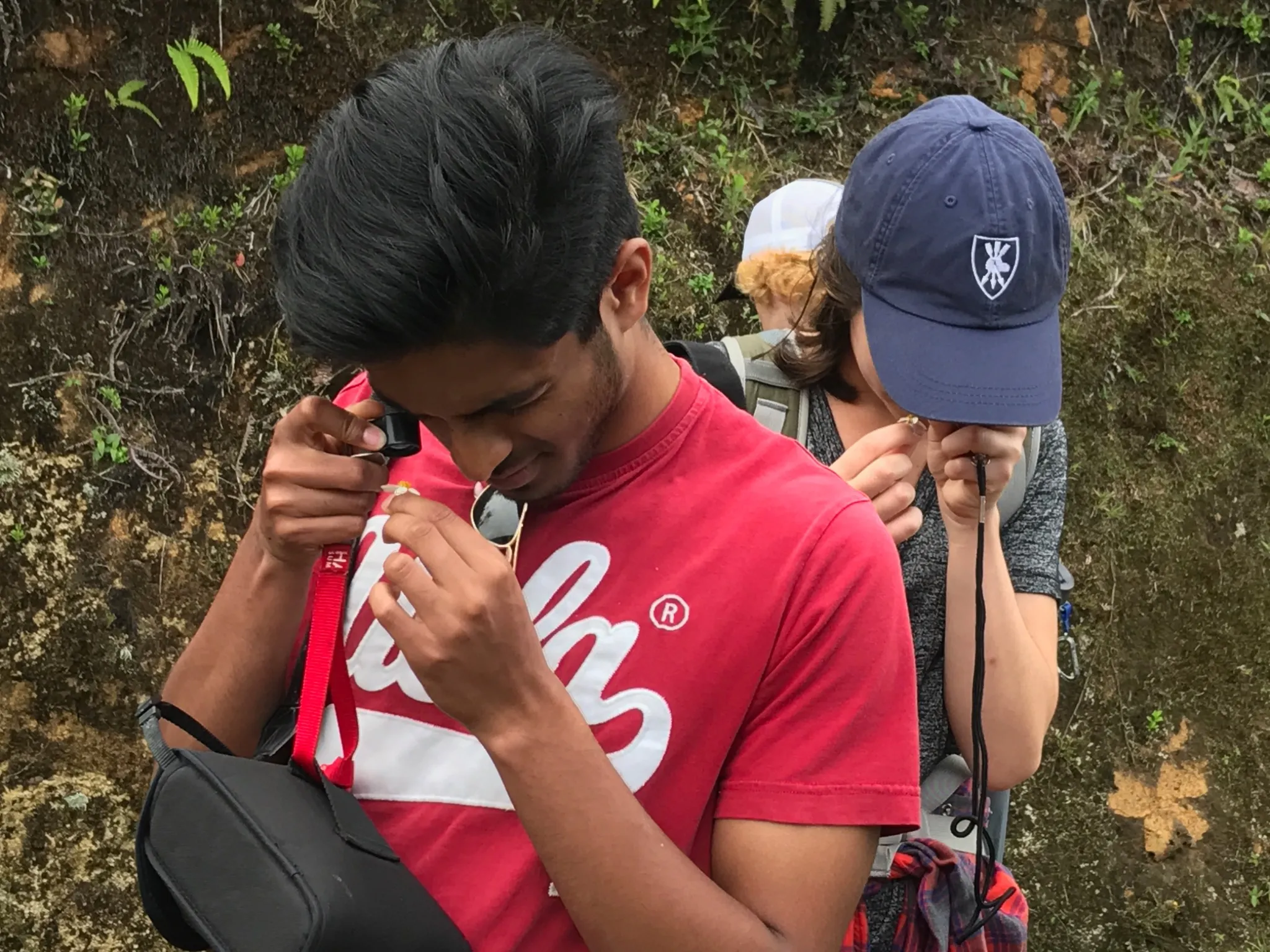
One of your key arguments is that ecological opportunity drives evolutionary diversification. Could you explain how this principle plays out in the tropics, and why it makes those ecosystems so evolutionarily productive?
Ever since Darwin, scientists have noticed how many more species there are in any one tropical place compared to Europe or North America, the north temperate zone. They also noticed that for most groups of animals and plants, there are more species described in the tropics than in the north, and terrestrial animal diversity parallels plant diversity. The debates have centered on why this is so. While the tropics are green year-round, they are not necessarily more productive in terms of annual biomass. Seasonality may have something to do with it. It is also true that the world has a much longer, older history of warm, tropical climates over the last 200 million years or so, while the north temperate zone developed more recently as the continents reached their current positions, influencing ocean temperature circulation patterns around 30 million years ago.


So the temperate zone is also younger, but the kinds of animals and plants that could adapt to the seasonality did, themselves, diversify extensively. This includes many of the herbaceous plants we see around us that escape underground in the winter and come up again in the spring—and it includes many insects and hibernating animals. Others migrate, of course. The kind of ecological opportunity that may be more prevalent in tropical areas may just be the opportunity for isolation in different places, because the annual changes in tropical climates are very slight and so any one place is stable over time. Up here in the north, in any one spot we experience a range of variation in weather you would get across a large stretch of latitude north-to-south, so species ranges are often much larger, meaning less room for species differences to accumulate. At least, that’s been a major idea. There are a lot of factors involved in such a complex phenomenon as species diversity.
Your fieldwork has taken you all around the world. Where have you been? Have you seen evidence, firsthand, of how climate change or habitat loss is altering biodiversity?
I spent one to two months a year in the Peruvian Amazon over five years, studying the insects of the rainforest canopy when I was in grad school as a curatorial fellow at the Smithsonian Institution. I also spent a lot of time in Mexico hunting milkweed beetles for my coevolutionary studies back then. I have been fortunate to have traveled throughout Central America and spent some time visiting Asia and Africa, but these days my focus is on Brazil, where I have a collaborator working with mosquitoes, and on the Dominican Republic, where my spouse Irina Ferreras, a curatorial assistant in the orchid collections at the Harvard University Herbaria, is from. The Dominican Republic also has a time capsule in the form of amber, 15-20 million years old, that captured species that look very much the way they do today. That alone is a remarkable lesson in species continuity over time.
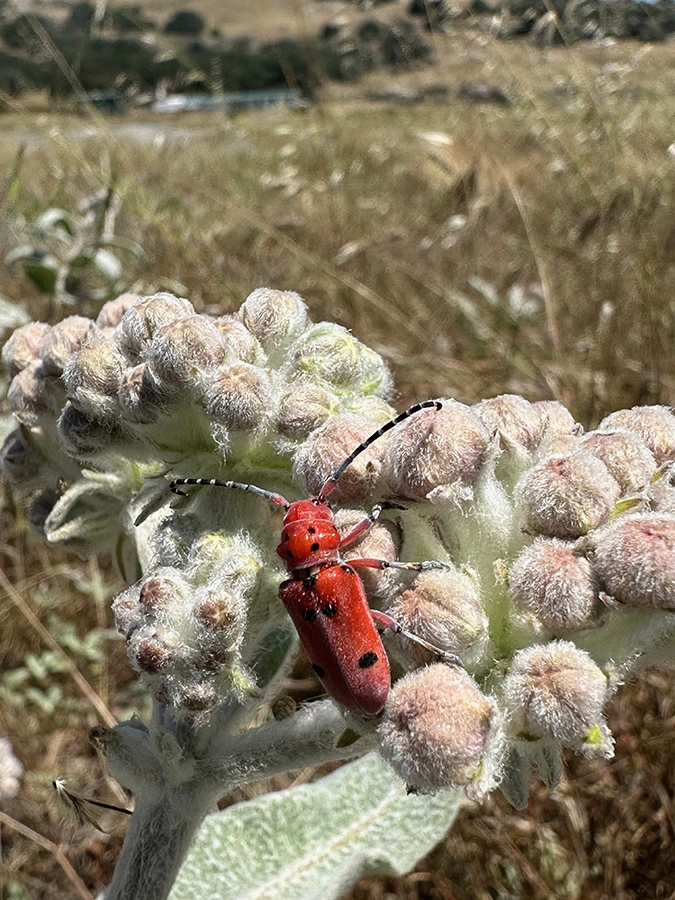
We’ve traveled a lot as a family, and our children Gabriela ’16 and Diego ’22 are bilingual and enthusiastic explorers, too! We have noticed the shrinking glaciers in Chile, Kenya, and Japan. It is quite noticeable when you see older photos and talk with locals. The world was tropical for a long time, and as it rapidly becomes tropical again because of the changes to the atmosphere, the main species affected will be the one that caused it. We depend on the agricultural land and the sea being where they have been over human history; life and economies depend on it. This is much too rapid for most species to adapt to, so some will decline while others move. We’re even seeing tropical mosquitoes in Massachusetts now that we didn’t see before. Best to prepare for change and do what we can to slow it down.
